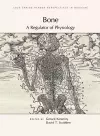
Bone: A Regulator of Physiology
2 authors - Hardback
£84.00
Gerard Karsenty received his MD and PhD from the University of Paris, France and completed his post-doctoral training at the University of Texas MD Anderson Cancer Center in 1990. His laboratory has studied every aspect of skeletal biology ranging from cell differentiation to function. His laboratory was the first one to decipher the molecular bases of osteoblast-specific gene expression, work that culminated in the identification of Runx2 as the master gene of osteoblast differentiation. The overarching assumption of Dr. Karsenty’s work is that the appearance of bone during evolution has profoundly changed the physiology of animals because of the energetic cost that bone growth entails. Thus, over the last 10 years, his group has explored the hypothesis that the control of bone mass and energy metabolism must be coordinated and that this coordination is done, in large part, by hormones like leptin and osteocalcin that appear during evolution with bone. His lab has explored every aspect of this hypothesis through genetic and molecular means. Concurrent with this research, the Karsenty lab is exploring whether there are additional connections between bone physiology and the function of other organs such as fertility. This work culminated in the discovery that bone, via osteocalcin, regulates testosterone production.